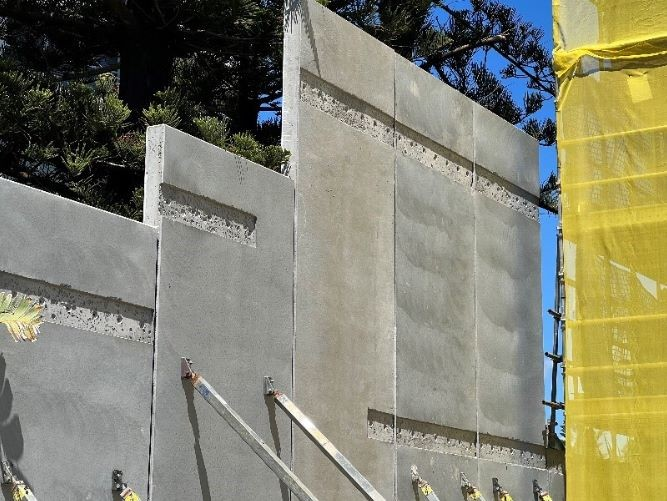Coordination: A case study in BIM
- Jim Mills

- 15 may 2023
- 3 Min. de lectura
Biminglab’s Midwater Apartments for our client XL Precast is a perfect example of a successful execution that relied on BIM methodology for its construction. A 40-store residential building on Brisbane’s Gold Coast, the Midwater is expected to be finished by the end of 2024.
The project markets itself through the concepts of luxury and contemporary living in a unique setting, as it offers panoramic views of the surroundings. For Biminglabs, the scope of the project meant designing and detailing production of walls at ground floor level, as well as columns running from levels 4 to 39, all of them made of precast concrete.

The key to success in seeing such a complex project through to completion is efficient collaboration between all parties involved. As we covered in a previous article, when starting to tackle a project, we are faced with the need to adapt to our client’s requirements in terms of format: what information do they require, and how should we display this information for effective communication? This subsequently leads to the need to establish and agree on a workflow—which means getting attuned with any drawing standards used by the client, becoming acquainted with vendors that have a direct impact on our work (such as suppliers of accessories that will become embedded in the concrete), and gathering any required digital information. Finally, relying on the timeline we have established, we follow all the approval processes with the client, which eventually leads to sending out flawless shop drawings in order to begin construction. Coordination is key in this process that needs to run like clockwork—one with many variables that need to be reconciled.
In our project, the modulation of the columns implied performing a thorough study of their weight in three different scenarios: as if they were 1, 2 or 3 levels high. The purpose of this was to survey whether it was possible to position the columns into place using the crane installed onsite. Eventually, this led to the decision to use columns of all three lengths, depending on their location with regards to the position of the tower crane. This would have a positive impact on various fronts:
Having only three variations of the same piece would optimize the manufacturing process;
Transportation from the factory to the site would be easier, as columns could be grouped together by size;
Zoning the floor plan as needed would streamline the installation process. The elements also underwent a repeatability study to verify whether the columns meant for one level could be reiterated on subsequent levels, thus rationalizing the process.
The geometry of both the precast walls and the columns was modeled in three dimensions to verify the interaction between connectors, embedded piping, and rebar. This allowed us to detect and correct any unwanted intersections at an early stage, ensuring that once the precast elements went in for production, making changes on the fly wouldn’t be necessary. The sophisticated design of the ground floor walls featured a series of curved notches which implied thorough detailing work on our part in order to come up with precise manufacturing specifications.


The productivity gains that BIM enables for projects of this scale is one of the main reasons clients decide to adopt the methodology. At Bbiminglabs, we work with a set of deliverables derived from the model that allow us to interact fluently with the client, and provide comprehensive instructions to assist in the manufacturing process:
3D model.
Shop drawings. Rebar schedules were included for the manufacturing of wall partitions and columns, which also implied modeling the rebar elements in 3D.
Assembly plans.
Specifications for piping embedded in precast elements, recessed notches, special rebar pieces outsourced by the client (mainly stirrups).

Being able to materialize ambitious designs that pride themselves in offering open, light-filled spaces and a seamless connection to the natural environment ultimately comes down to being able to effectively manage the construction process at each stage. This means that nothing should be left to chance—from the more general aspects of siting and orientation to the minutest details of joinery and provisions for recessed lighting in concrete slabs or walls. If architecture intends to show us a different way to enjoy life through high-quality design, construction has to make it possible through innovative methods capable of bringing ideas to reality. The ability to control variables that BIM enables is more than just a steppingstone in this direction. In our experience, it’s the way to go.




Comentarios